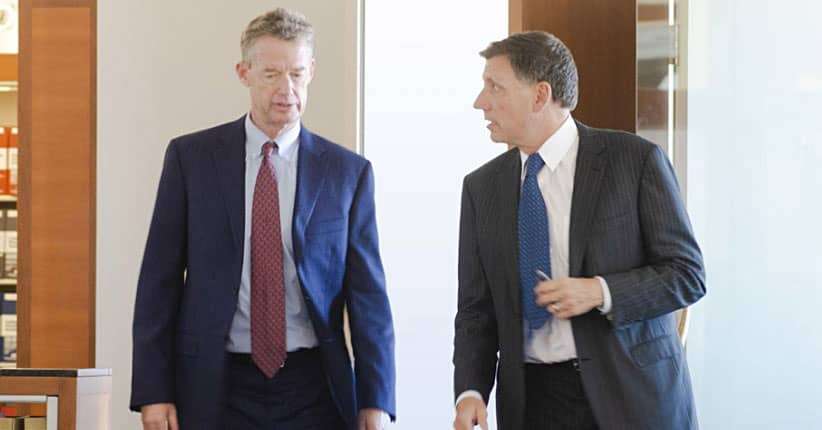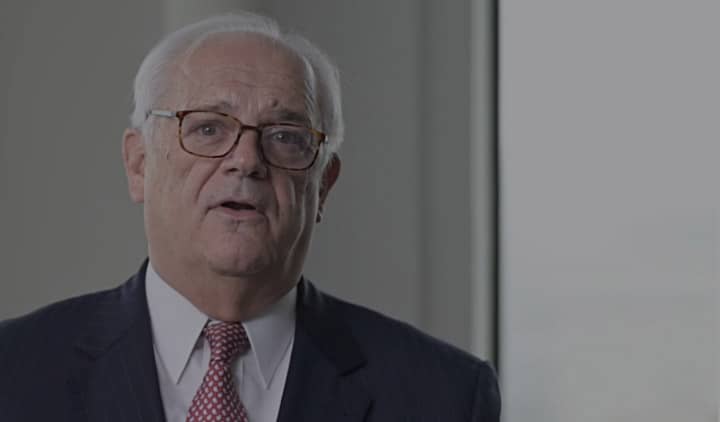Biking is a common, eco-friendly way to get around, especially in San Francisco. Increasingly, people are choosing to bike instead of driving a car to cut down on transportation costs, Department of Motor Vehicle fees, and to reduce their carbon footprint.

How Many People in San Francisco Are Biking?
According to the San Francisco Municipal Transportation Agency (SFMTA)’s website, automated cyclist counters are installed throughout the city to track and monitor cyclist data. In 2017, San Francisco saw monthly bike ride figures ranging from 248,512 trips in February 2017 to 389,995 trips in May 2017. That’s well over 10,000 bike trips per day.
The SFMTA, for the past two years, has been collecting cyclist data through three separate data dashboards as well as monthly averages:
- The Counters Most Recently Installed Dashboard displays monthly bike volumes for the eight bike counters installed after 2016.
- The Average Weekday Bike Volumes Dashboard displays average weekday volumes for 73 bike counters throughout the city.
- The Hourly Bike Counts displays hourly bicycle volume data for all the bike counters throughout the city.
So, what does the SFMTA do with this data? With so many cyclists trekking through the city every day, the SFMTA needs to take steps to make San Francisco safer for cyclists, reducing the number of accidents per day. The SFMTA also analyzes bicycle volumes to support San Francisco’s growing cyclist community through the implementation of various transportation initiatives.
In January 2012, the SFMTA and its board of directors released the 2013-2018 SFMTA Strategic Plan, which outlines the visions, goals, and mission of the SFMTA, as well as the agency’s goals for supporting the city’s Transit First policy. San Francisco wants to prioritize alternative means of transportation to reduce the city’s carbon footprint and protect the environment.
SFMTA Strategic Planning
The SFMTA Strategic Plan provides consistency and clarity to state, municipal, and regional policymakers developing and implementing transportation initiatives in San Francisco.
In 1999, San Francisco voters supported the Transit First policy to establish the SFMTA and better the city’s transportation system. SFMTA updates its strategic plan periodically, and under the last strategic plan, the city saw:
- A reduction in traffic fatalities
- Transportation system expansion
- Greater transit service
- The establishment of effective outreach initiatives
- The replacement of public transit vehicle fleets for safety and efficiency
The strategic plan works by incorporating the policies and programs from multiple state, regional, and local agencies into the development of the plan itself, including Vision Zero, ConnectSF, and the Mayor’s Office Strategic Plan. The plan then goes through the strategic plan cycle, identifying initiatives, engaging in long-range planning, and conducting assessments. Then the cycle restarts; the SFMTA re-visits the strategic plan and contributing agencies, revamping and strengthening the strategy as time goes on.
Four Main Goals of SFMTA
The SFMTA has four main goals it wants to accomplish under the current strategic plan. These goals and their accompanying objectives guide the way the SFMTA makes planning decisions, prioritizes capital projects, and how capital budgets operate.
The goals and objectives of the SFMTA strategic plan are:
- Goal #1: Create a safer transportation experience for all San Francisco residents by:
- Eliminating all traffic deaths
- Improving transit system security
- Improving transit system safety
- Goal #2: Make sustainable modes of transportation, such as public transit, the preferred means of transportation by:
- Enhancing and expanding sustainable modes of transportation throughout San Francisco
- Improving transit service
- Managing parking demand and congestion
- Goal #3: Improve the environment and quality of life in San Francisco and surrounding areas by:
- Advancing sustainable transportation and land use policies
- Providing environmental stewardship through the improvement of air quality and the discussion of climate change
- Achieving SFMTA financial stability
- Guiding emerging mobility options to be sustainable
- Using SFMTA operations to achieve equity in San Francisco
- Goal #4: Create a workplace that provides excellent service by:
- Creating a diverse and inclusive workplace
- Improving the safety, security, and functionality of workplaces
- Strengthening wellness and employee morale
- Enhancing public outreach, community engagement, and customer service
- Increasing the efficiency of business projects and processes
Monthly Reports On Data Findings
The SFMTA measures its ability to meet these goals through the collection of performance metrics, which are available on its website. The agency collects data on Muni bus crashes, customer satisfaction, the SFMTA’s carbon footprint, on-time performance, and more. The agency reports on its data findings by:
- Publishing monthly performance metrics on the SFMTA website
- Issuing an annual SFMTA report
- Providing quarterly updates to the SFMTA Board’s Policy and Governance Committee
- Performing a biennial review of municipal transportation quality
- Reporting to the city controller’s office on a monthly and semiannual basis
In addition to these monthly reports, the SFMTA identifies key performance metrics it aims to hit by the end of the next two fiscal years. The agency bases the key metrics for the 2019 and 2020 fiscal years by comparing them to the 2017 baseline.
Key Performance Metrics for The 2019 and 2020 Fiscal Years
The key performance metrics for the 2019 and 2020 fiscal years are:
- Eliminate traffic fatalities to hit the city’s Vision Zero goal
- 2017 baseline: 20 fatalities
- Achieve a 5% decrease in Muni collisions per year
- 2017 baseline: 6.8 crashes per 100,000 miles
- Achieve a 2% increase in the customer safety rating of Muni buses and stops
- 2017 baseline: 60% of responses rating the safety of Muni vehicles as good or excellent and 59% of responses rating the safety of Muni stops as good or excellent
- Achieve a 5% decrease in Muni-related crimes
- 2017 baseline: 4.6 crimes over 100,000 miles
- Establish a 2017 baseline for bicycle ridership and increase bicycle trips
- 2017 baseline: not established
- Achieve a 58% rate in sustainable transit mode sharing
- 2017 baseline: 54% sustainable mode share
- Eliminate traffic fatalities in communities of concern
- 2017 baseline: 8 fatalities
- Achieve an 85% customer satisfaction rating
- 2017 baseline: 83% responses rated SFMTA services as good or excellent
- Achieve 85% on-time Muni performance
- 2017 baseline: 57% on-time Muni performance
- Achieve the delivery 98.5% of Muni scheduled service hours
- 2017 baseline: 98.9% of scheduled service hours
- Increase the number of people using free or reduced Muni programs by 4% over the 2017 baselines
- 2017 baselines: 62% of youth are enrolled and 36% actively use the program; 85% of seniors are enrolled and 57% actively use the program; 42% of people with disabilities are enrolled and 29% actively use the program; 26% of people eligible for Lifeline are enrolled and 11% actively use the program.
By the end of 2018, the SFMTA plans to unveil a new strategic plan to build upon the progress made under the current one.
2017 Key Findings
The SFMTA releases bicycle data based on their collected results during the previous year. These key findings provide insight into the cycling habits of San Francisco residents and point to certain factors that may affect cyclist’s behavior.
During 2017, the SFMTA found that:
- More than 44,000 bikes traveled through San Francisco on the average weekday.
- The morning peak bicycle commute occurred between 7 and 10 am.
- The evening peak bicycle commute occurred between 4 and 7 pm.
- The SFMTA added more than 14 miles of bicycle pathways in the city.
- The Panhandle Bike Path’s automated counter saw the most bike traffic during 2017, logging 794,124 rides.
- August 2017 saw the highest bike ridership in the city, logging 1,368,437 bikes at the automated counters.
- The U.S. Census found that 3.9% of San Francisco residents commuted by bike in 2016.
- San Francisco’s wet weather in September 2017 led to a 5% decrease in manual bike counts.
- San Francisco’s manual bike counts have increased by 196% in the past 11 years.
- Heavy city construction led to a decrease in bike ridership; 1,362 blocks of right of way changed due to the issuance of over 4,000 special traffic permits.
- February 20, 2017 was San Francisco’s wettest day, with 2.16 inches of rain. San Francisco residents rode 5,934 bikes that day.
- September 2, 2017, was San Francisco’s hottest day, peaking at 88 degrees Fahrenheit. San Francisco residents rode 29,203 bikes that day.
- January 20, 2017, was San Francisco’s coldest day, reaching 32 degrees Fahrenheit. San Francisco residents rode 16,578 bikes that day.
These key findings suggest that wet weather dissuades San Francisco residents from cycling more than cold weather and hot weather do. In addition, peak bicycle commute hours may see the highest accident rates due to high congestion, but the current key findings do not provide this data.
The Vision and Mission Statement
The vision of the SFMTA is to provide excellent transportation options for the city of San Francisco. The mission of the SFMTA is to connect residents through an equitable, safe, and sustainable transportation system. Through the implementation of the above goals and objectives, the monitoring of cyclist and transit data, and encouraging sustainability in future projects, the SFMTA seems on track to achieve this goal.
However, the 2017 key findings do not explicitly address cyclist safety, fatalities, and injuries because of collisions and other traffic accidents. The goals and objectives express a commitment to safety, but without targeted prevention efforts for cyclists, crashes and collisions will still be a serious hazard.
Bicycle accidents happen every day in San Francisco. From negligent drivers to accidental collisions in crosswalks, cyclists face hazards throughout the city. When you sustain injuries in a bicycle accident, you deserve to recover compensation for medical expenses, lost wages, pain and suffering, and more.
The personal injury attorneys at Walkup, Melodia, Kelly, & Schoenberger are here to help in these situations. We will guide you through the complicated bicycle accident litigation process so that you can focus on recovery and healing. We will collect evidence, gather witness testimony, and review security footage to build a compelling case. We will explore all avenues to recover potential damages so that you don’t have to.
Schedule a free consultation today online or by calling our offices at (415) 981-7210.


